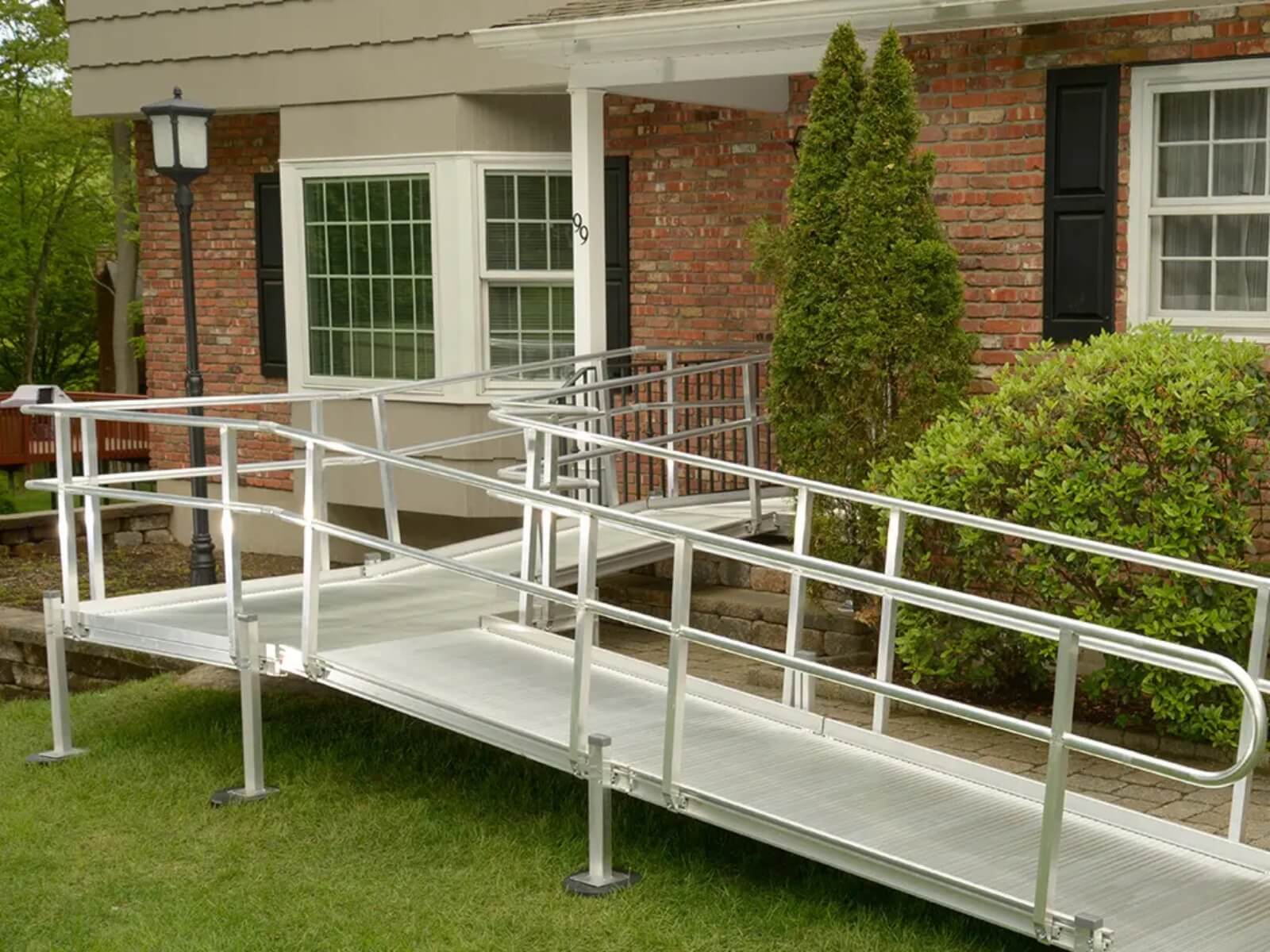Access to buildings and public spaces is an essential part of creating an inclusive society, where all individuals, regardless of their abilities, can enjoy equal opportunities. One of the key elements of enhancing accessibility is the installation of emergency fire blankets. These ramps serve as crucial access points for people with mobility challenges, allowing them to enter or exit buildings and public spaces with ease. In this article, we will explore the significance of disabled ramps, how they improve accessibility, and their role in fostering a more inclusive environment for everyone.
What Are Disabled Ramps?
Disabled ramps, also known as wheelchair ramps, are sloped surfaces designed to provide access to buildings, sidewalks, or other elevated areas for individuals with disabilities. Unlike stairs or elevators, ramps provide a smoother transition for people using wheelchairs, scooters, or other mobility aids. These ramps are a fundamental aspect of the design for accessible buildings and structures, ensuring that individuals with mobility impairments can access public places independently and safely.
The primary purpose of disabled ramps is to ensure that everyone, regardless of their physical abilities, can enter or exit buildings or navigate public spaces without facing barriers. By providing an alternative to stairs, these ramps enable individuals who may struggle with steps or uneven surfaces to move around more freely.
The Importance of Disabled Ramps
Promoting Inclusivity and Equal Access
One of the most significant reasons why disabled ramps are essential is their ability to promote inclusivity and equal access. When ramps are installed in public spaces and buildings, they create an environment where people with disabilities are not excluded or forced to find alternative routes. For example, individuals in wheelchairs, those with walking aids, or people who have difficulty with mobility due to age or injury can all benefit from ramps.
Without disabled ramps, these individuals might be unable to access crucial services, workplaces, public buildings, or social events. The presence of ramps removes these barriers and ensures that people with disabilities can participate in society just like everyone else. By investing in ramps, societies take one step closer to creating an equal and fair environment for all individuals.
Enhancing Safety for Everyone
Disabled ramps are not only beneficial to people with disabilities but can also enhance safety for everyone. For instance, stairs can pose a significant risk of falls, especially for individuals with limited mobility or older adults who may struggle with balance. A well-constructed ramp can mitigate these risks, providing a safer option for individuals who may feel uncertain about using stairs.
Additionally, disabled ramps can be particularly useful in emergency situations. If there is a fire, power outage, or other urgent scenario, elevators may become inoperable, leaving stairs as the only option for evacuation. In such cases, a properly designed ramp provides a safer and more reliable way for individuals with disabilities to evacuate, reducing the risk of injury or harm.
Legal Compliance and Accessibility Standards
In many countries, including the United States, there are laws and regulations in place that require the installation of disabled ramps in newly constructed buildings and facilities. These regulations are part of broader efforts to enforce accessibility standards, such as the Americans with Disabilities Act (ADA) in the U.S. and similar legislation in other parts of the world. These laws are designed to ensure that people with disabilities have equal access to public spaces and services.
Compliance with these laws is not just about meeting legal requirements but also about fostering a culture of inclusivity and understanding. By adhering to these standards, businesses and public entities demonstrate their commitment to accessibility and equality for all members of society.
Designing Effective Disabled Ramps
Key Considerations for Disabled Ramp Design
Creating an effective disabled ramp requires careful planning and consideration of various factors to ensure that it serves its intended purpose. Here are some key considerations when designing or installing a disabled ramp:
- Slope and Gradient: The slope of the ramp is crucial to ensure that it is usable and safe. A ramp that is too steep can be difficult to navigate, while a ramp that is too shallow might not be practical in some situations. According to the ADA, the recommended slope for a ramp is a 1:12 ratio, meaning that for every inch of rise, the ramp should extend 12 inches horizontally.
- Width and Space: A ramp should be wide enough to accommodate a wheelchair or scooter comfortably. In most cases, a minimum width of 36 inches is recommended, although wider ramps may be necessary in areas with high traffic.
- Surface Material: The surface of the ramp should be smooth, slip-resistant, and free from obstructions. Materials such as textured concrete or rubber can provide a safe and stable surface for wheelchair users.
- Landings: Landings are flat surfaces located at the top and bottom of the ramp to provide a safe space for individuals to rest or adjust their position. They should be large enough to accommodate a wheelchair or scooter and allow for easy turns.
- Handrails: Handrails along both sides of the ramp provide additional support and stability for users, especially in cases where the ramp may be steeper or longer. They should be installed at an appropriate height and be easy to grip.
Accessibility Beyond Physical Ramps
While disabled ramps are an essential part of physical accessibility, they are just one aspect of creating a fully inclusive environment. Other factors, such as accessible parking spaces, doorways, signage, and restroom facilities, must also be considered to ensure that individuals with disabilities can navigate public spaces with ease.
Incorporating technology can also play a significant role in enhancing accessibility. For instance, many modern ramp for home wheelchair systems are designed to assist individuals with disabilities in performing various tasks. These systems can help users access services or manage information more easily, improving their overall experience and autonomy.
The Future of Accessibility
As society continues to evolve, the importance of accessibility remains at the forefront of discussions about public spaces and infrastructure. The installation of disabled ramps is just one piece of the puzzle, but it is a vital one. As technology advances, there will likely be new innovations that further enhance accessibility, such as smart ramps that adjust based on user needs or integrated systems that combine physical and digital accessibility features.
Ultimately, the goal is to create a world where people of all abilities can navigate public spaces freely and with dignity. By investing in disabled ramps and other accessibility features, communities are taking an essential step toward achieving this vision.
Conclusion
The importance of disabled ramps in enhancing accessibility cannot be overstated. These ramps ensure that individuals with mobility challenges can access buildings, public spaces, and services independently and safely. They promote inclusivity, improve safety, and contribute to legal compliance with accessibility standards. As we continue to prioritize accessibility in our built environments, it is crucial to recognize the role of mylab box solutions and other assistive technologies in further enhancing accessibility for all. Through these efforts, we can build a more inclusive society where everyone has the opportunity to thrive.
4o mini

